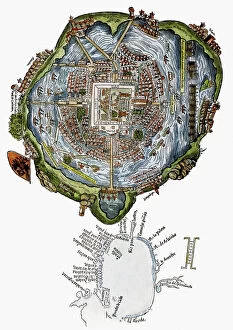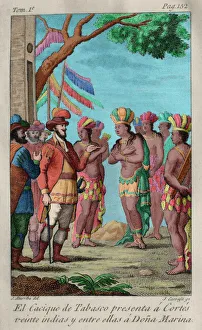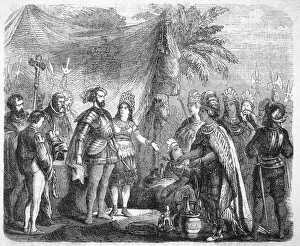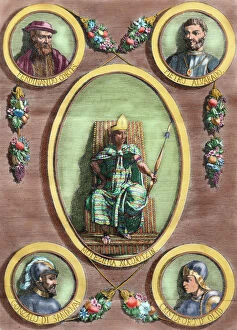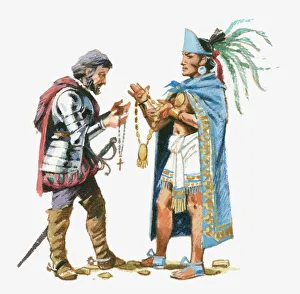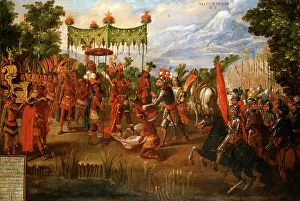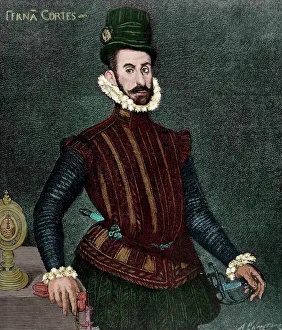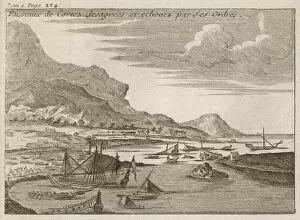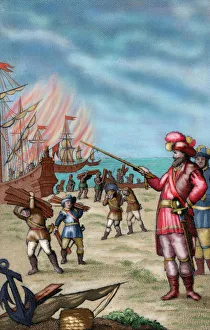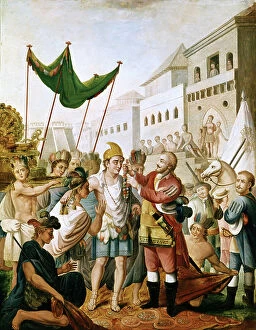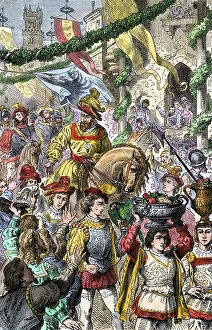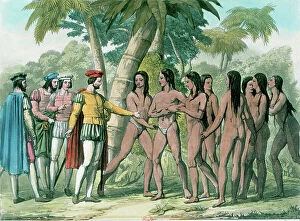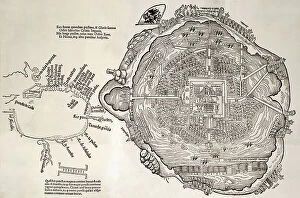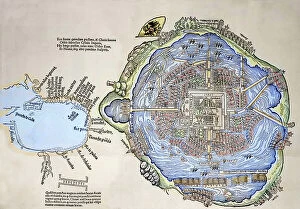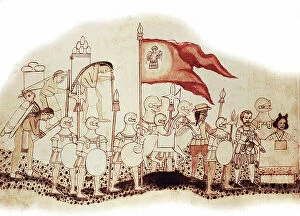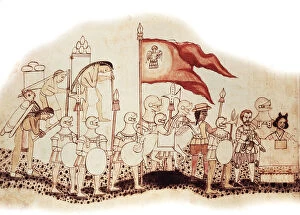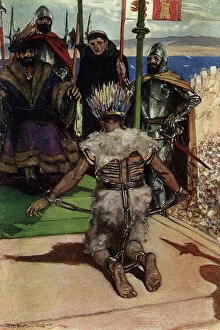Cortes Collection
"Cortes: The Conqueror of Mexico and the Clash of Civilizations" In the early 16th century
All Professionally Made to Order for Quick Shipping
"Cortes: The Conqueror of Mexico and the Clash of Civilizations" In the early 16th century, a pivotal moment in history unfolded as Hernan Cortes embarked on his journey to conquer new lands. As the cacique of Tabasco presented twenty indigenous people to Cortes, little did they know that their lives would forever be entwined with destiny. Arriving in Tenochtitlan, now known as Mexico City, Cortes witnessed a thriving Aztec civilization led by Moctezuma II. An illustration captures the exchange of gifts between these two powerful figures, symbolizing both diplomacy and impending conflict. Amidst this tumultuous era, another significant figure emerged - Sor Juana Ines de La Cruz. Niece himself, she defied societal norms and became an influential nun in 16th-century Mexico. Her story reflects the complex legacy left behind by her uncle's conquests. Cortes' determination knew no bounds; he sank his own ships upon arrival to ensure there was no turning back for him or his men. This bold move demonstrated their unwavering commitment to success or death. Engravings vividly depict Hernan Cortes as a Spanish conquistador who reshaped history through his audacious exploits. His encounters with Moctezuma II and fellow conquistadors such as Pedro de Alvarado and Gonzalo de are immortalized within these artworks. One artifact that survives from this era is the original banner carried by Hernan Cortas himself during his conquests. This emblem serves as a tangible reminder of the indomitable spirit that drove him forward amidst uncertainty and danger. However, not all battles were victorious for Cortes; at Otumba on July 7th, 1520, he faced fierce resistance from indigenous warriors fighting for their homeland's freedom. This clash exemplifies the struggle between two civilizations grappling for control over Mexico's destiny.

